
Was ist generative KI: Terminologie
Einführung Generative KI ist ein dynamisches und sich schnell entwickelndes Feld innerhalb der künstlichen Intelligenz. Es konzentriert sich auf die Entwicklung von Algorithmen, die neuartige
Kotlin Multiplatform Mobile (KMM) is a modern approach to cross-platform mobile app development, enabling developers to write shared assets that runs on both Android and iOS. This article delves into the core concepts, advantages, and practical aspects of using KMM for mobile app development. It also provides a comparison with other cross-platform frameworks and highlights real-world use cases, emphasizing the role of software development kit (SDK) in facilitating this process.
The mobile app development landscape is continually evolving, with developers seeking efficient ways to deliver high-quality apps across multiple platforms. Kotlin Multiplatform Mobile (KMM) offers a compelling solution by allowing developers to write common code for Android and iOS, leveraging Kotlin’s expressive syntax and robust features. SDK(s) play a crucial role in this ecosystem, providing the necessary tools and libraries to streamline development. This article explores KMM’s capabilities, benefits, and how it compares to other cross-platform solutions.
Developers often face challenges in maintaining separate codebases for Android and iOS apps, leading to increased development time, costs, and potential inconsistencies. KMM, supported by comprehensive SDK(s), addresses these issues by providing a shared codebase, reducing duplication of effort, and ensuring consistency across platforms.
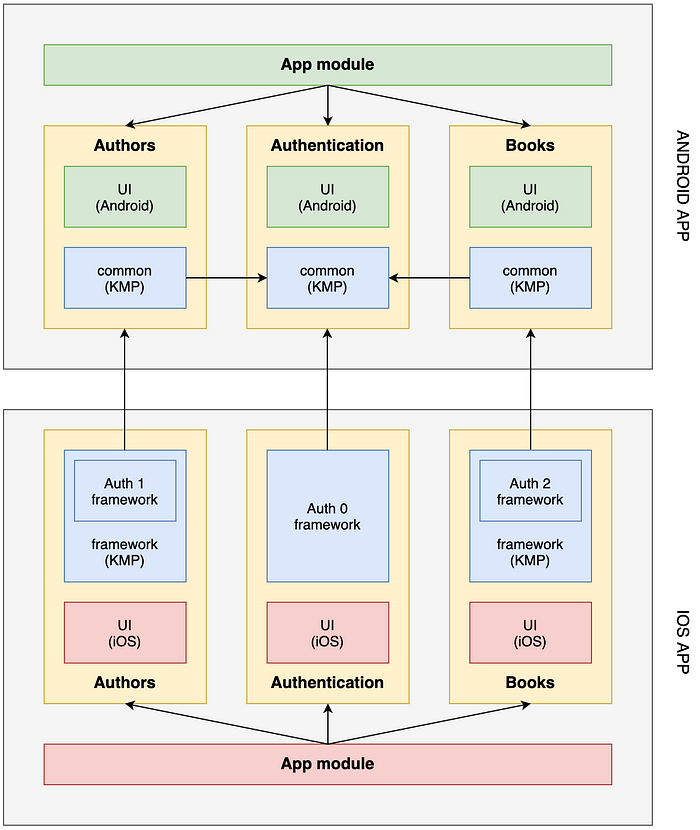
Problem Overview (https://miro.medium.com/v2/resize:fit:720/format:webp/1*8Ne4eMYHJS2OZ4uYtv0QFw.png)
Kotlin, a statically typed programming language developed by JetBrains, has gained popularity for its concise syntax, safety features, and full interoperability with Java. With the introduction of Kotlin Multiplatform, developers can now write shared code that runs on various platforms, including JVM, JavaScript, and native environments. KMM specifically targets mobile platforms, allowing for shared business logic while keeping platform-specific assets for user interface and other native features.
Shared Code: KMM allows developers to write common assets for both Android and iOS, including business logic, data models, and network requests.
Expect/Actual Mechanism: Developers can write platform-specific implementations using the expect and actual keywords, facilitating seamless integration with native APIs.
Interoperability: KMM ensures smooth interoperability with existing codebases and libraries, enabling gradual adoption and integration into existing projects.
Modular Architecture: Projects can be organized into modules, with shared assets residing in a common module and platform-specific assets in separate modules.
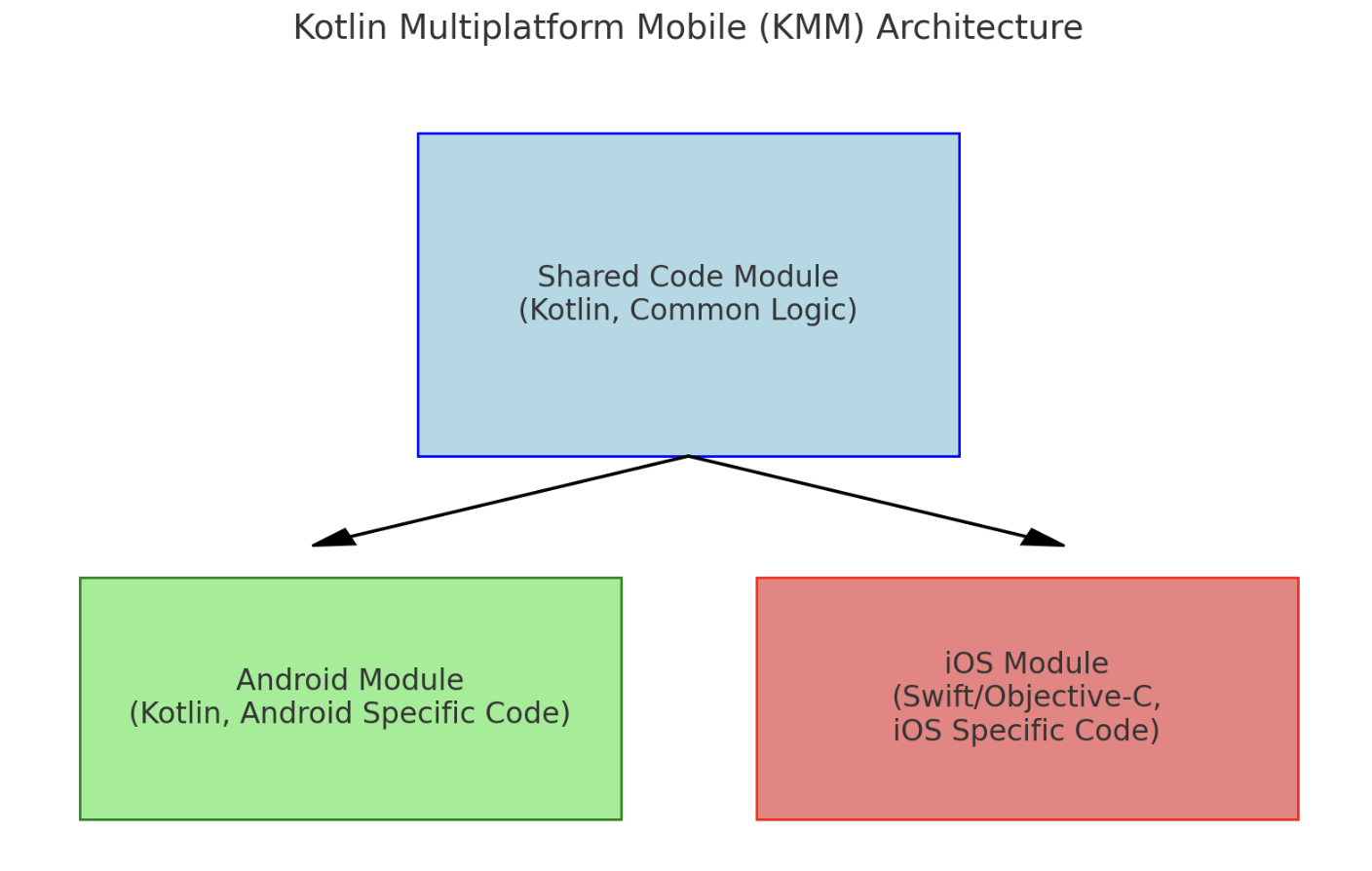
KMM Architecture Diagram
Code Reusability: By sharing code between Android and iOS, developers can significantly reduce duplication and streamline the development process.
Consistency: Shared business logic ensures consistent behavior across platforms, reducing the likelihood of platform-specific bugs and discrepancies.
Productivity: Kotlin’s expressive syntax, combined with the ability to share code, enhances developer productivity and accelerates the development cycle.
Flexibility: KMM allows for incremental adoption, enabling developers to gradually migrate existing projects or start new ones with a shared codebase.
Strong Community and Tooling: Backed by JetBrains and supported by a vibrant community, KMM benefits from robust tooling, comprehensive documentation, and active development.
Learning Curve: Developers familiar with platform-specific development may face a learning curve when adopting KMM, particularly in understanding the expect/actual mechanism and handling platform-specific code.
Performance Overheads: While KMM aims for optimal performance, there may be some overheads associated with interoperation between shared and platform-specific code.
Maturity: As a relatively new technology, KMM is still evolving, and developers may encounter limitations or issues that require workarounds or additional effort.
To illustrate how KMM compares with other cross-platform frameworks, let’s consider a simple example of making a network request and displaying the data in a mobile app.
Sharing different levels and UI (https://kotlinlang.org/docs/multiplatform.html#kotlin-multiplatform-use-cases)
In KMM, the shared code would handle the network request, and platform-specific code would manage the user interface.
Shared Code (Kotlin)
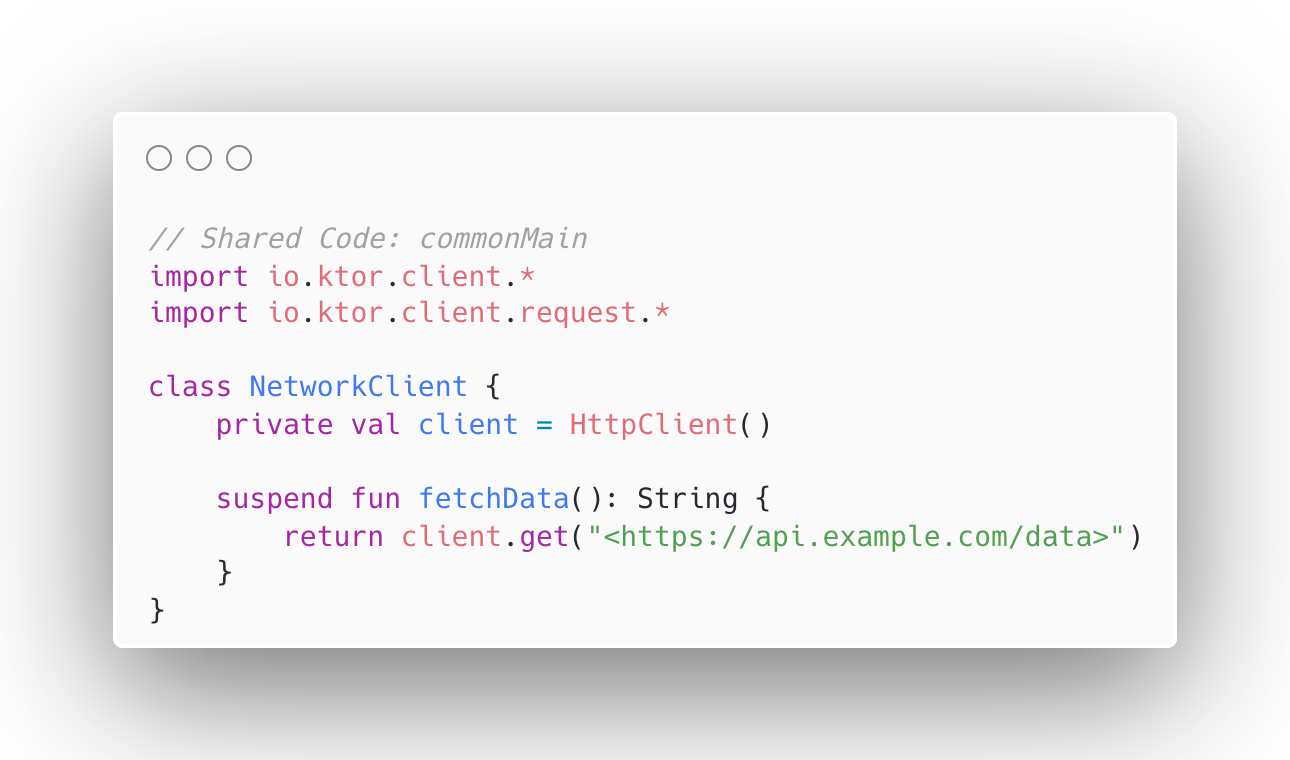
Kotlin Shared Example
Android Specific Code (Kotlin)
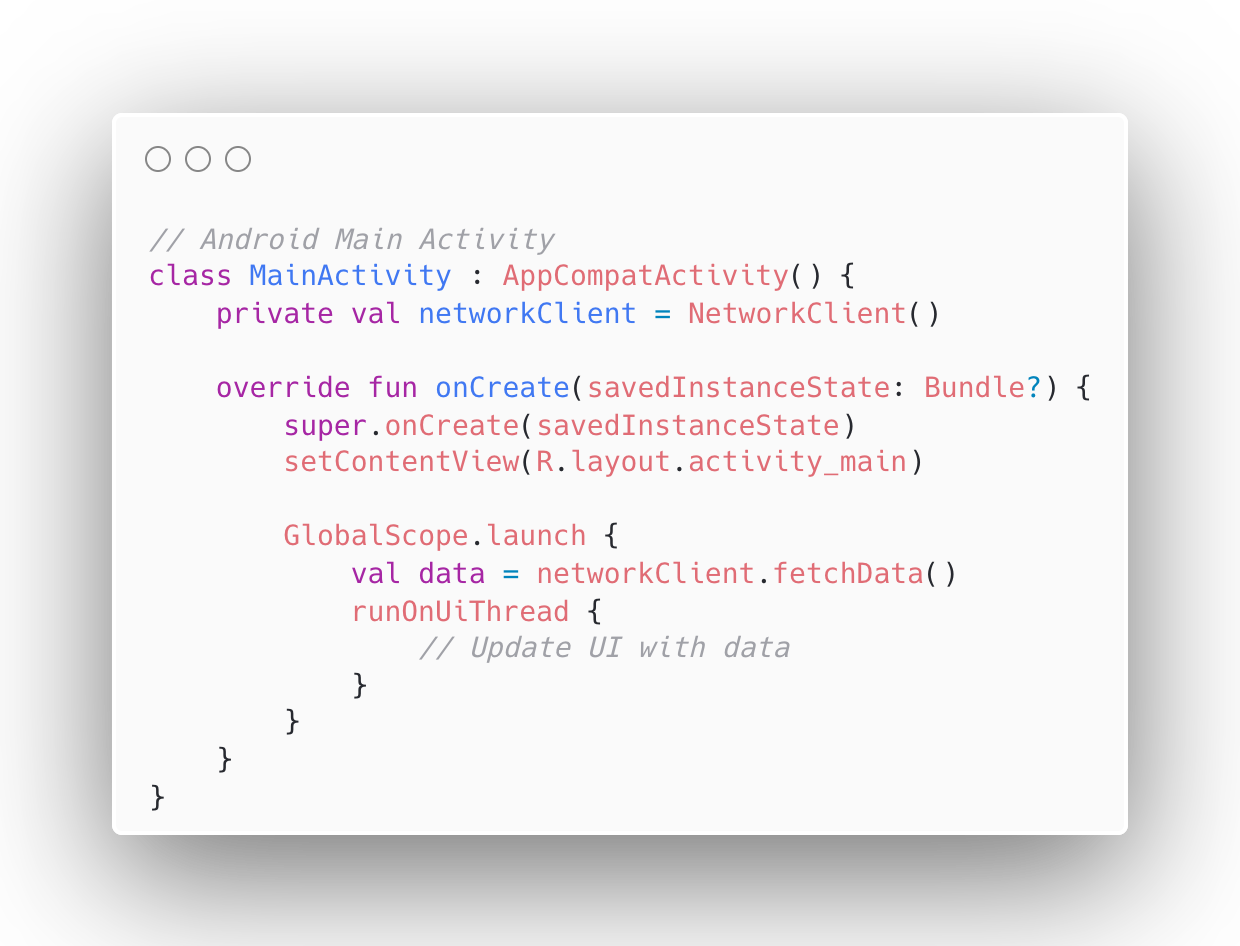
Android Specific Main Activity
iOS Specific Code (Swift)
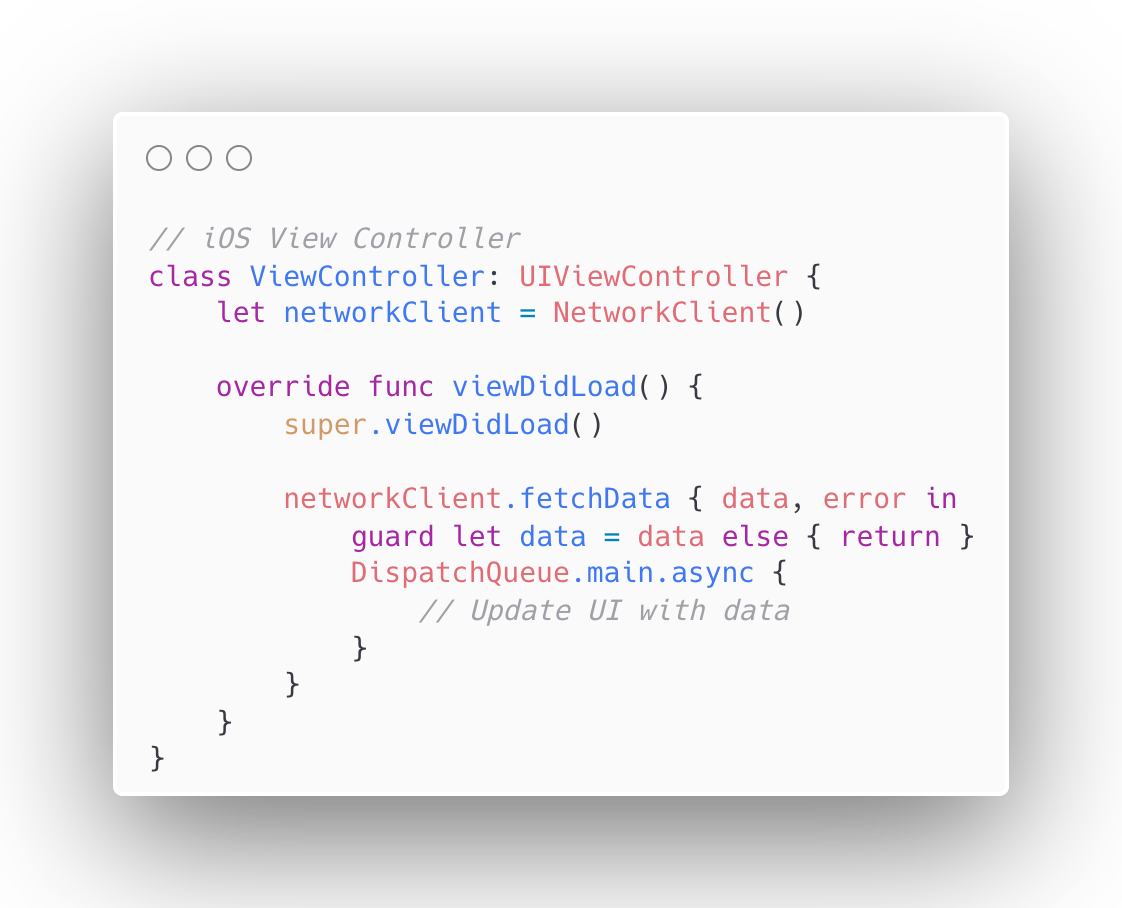
iOS Specific View Controller
React Native uses JavaScript to write code that runs on both platforms, with native modules for platform-specific functionality.
Shared Code (JavaScript)
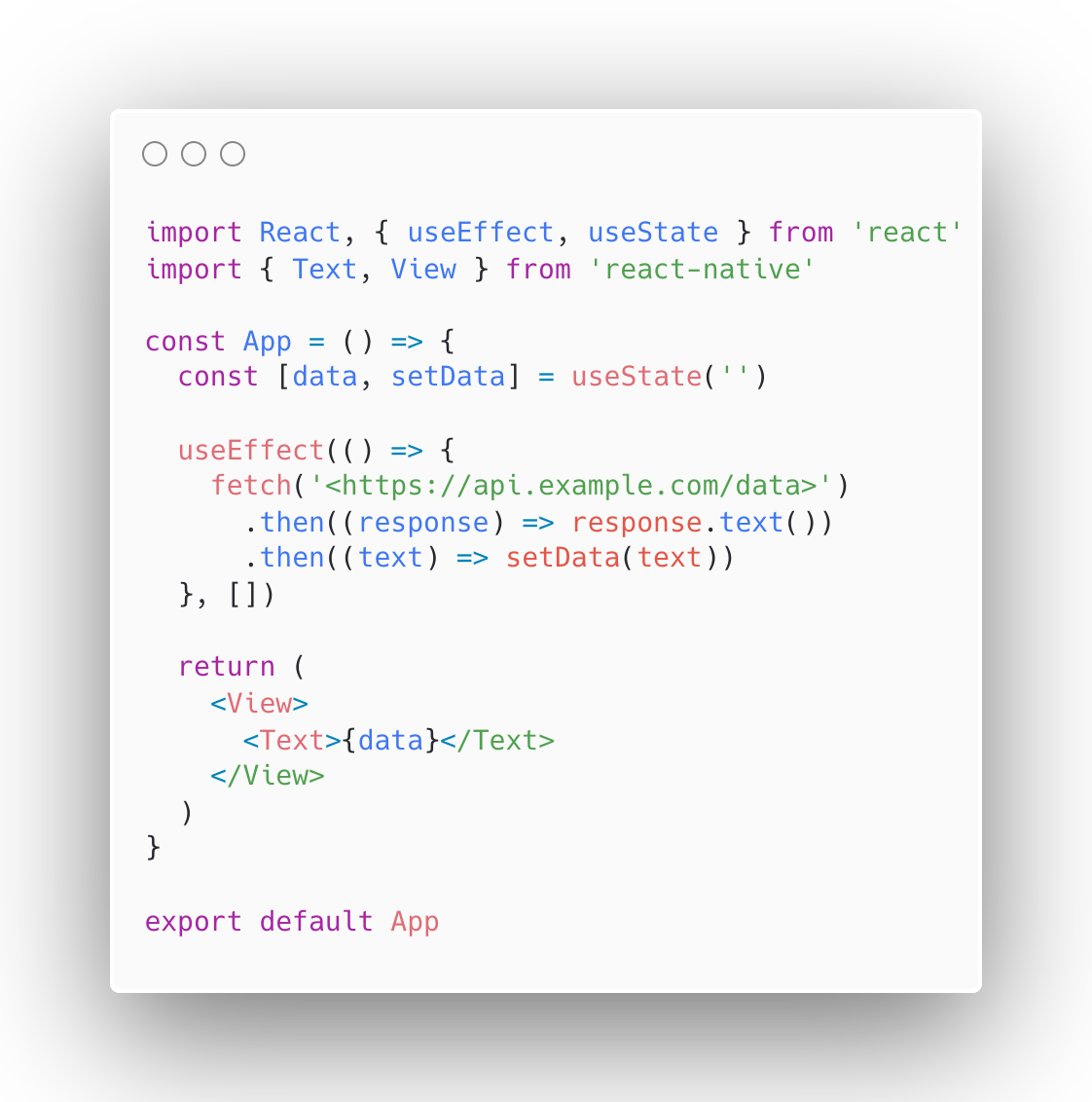
React Native Shared Example
Flutter uses Dart to write apps that compile to native code for both platforms.
Shared Code (Dart)
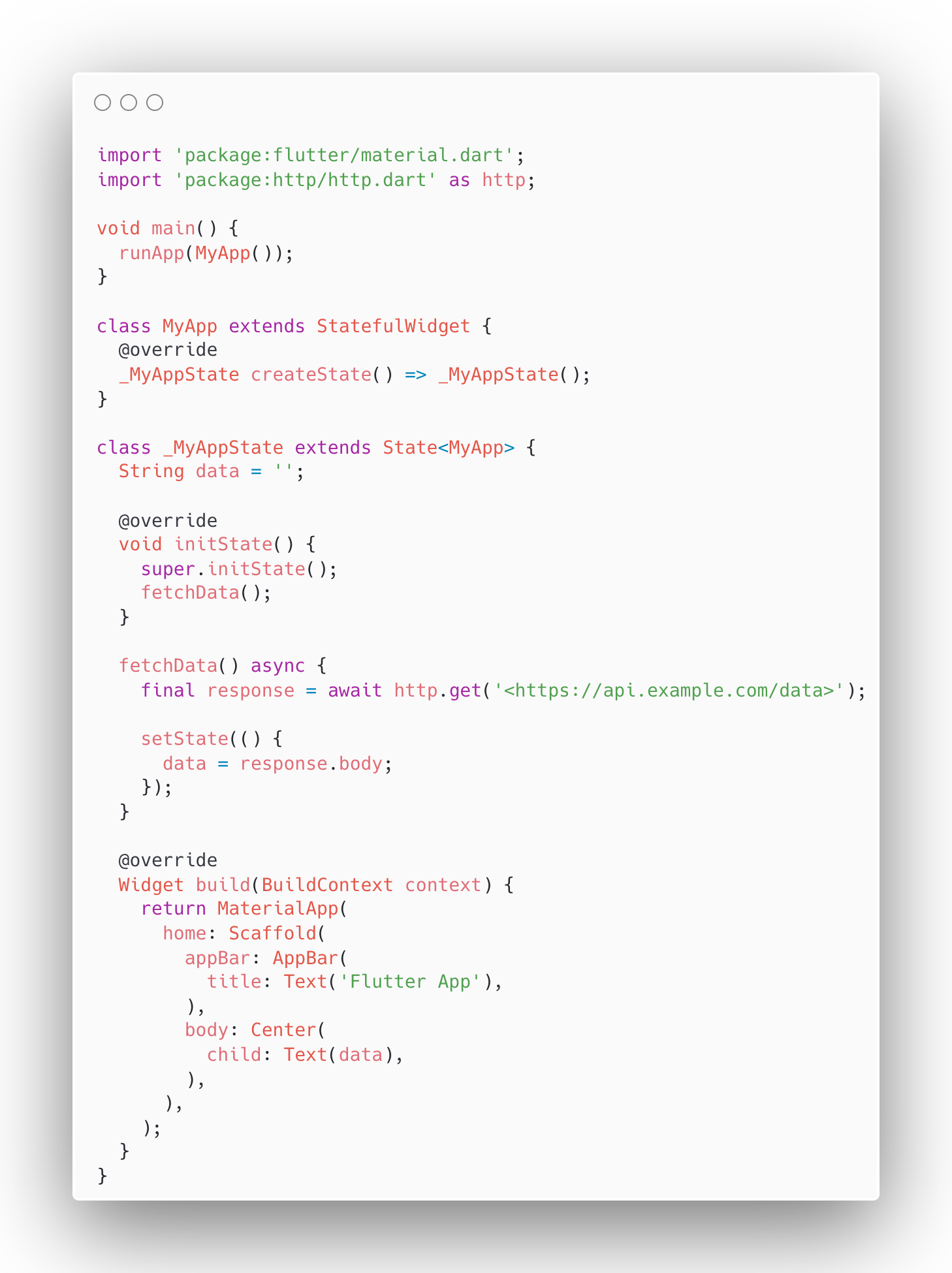
Flutter Shared Example
Enterprise Applications: KMM is well-suited for large-scale enterprise apps requiring consistent business logic across platforms.
E-commerce: Sharing code for business logic, data models, and network operations can expedite the development of feature-rich e-commerce apps.
Finance: Financial applications benefit from KMM’s ability to ensure consistency and reliability in critical business logic.
Netflix: Netflix adopted KMM to streamline the development of its Android and iOS apps, enabling faster feature development and ensuring consistency across platforms.
VMware: VMware uses KMM to develop its enterprise mobile apps, leveraging the shared codebase to maintain consistency and reduce development effort.
Kotlin Multiplatform Mobile offers a powerful solution for cross-platform mobile app development, enabling developers to write shared code that runs on both Android and iOS. By reducing duplication, enhancing consistency, and leveraging Kotlin’s robust features, KMM provides a compelling alternative to other cross-platform frameworks. Despite its learning curve and evolving nature, KMM holds great promise for efficient and maintainable mobile app development.
References
JetBrains. (2021). Kotlin Multiplatform Mobile. Retrieved from JetBrains KMM
Kotlin Multiplatform by Tutorials. Razeware LLC.
JetBrains. (2021). Kotlin Documentation. Retrieved from Kotlin Documentation


Einführung Generative KI ist ein dynamisches und sich schnell entwickelndes Feld innerhalb der künstlichen Intelligenz. Es konzentriert sich auf die Entwicklung von Algorithmen, die neuartige

Der Kunde. Die Bank eines großen deutschen Automotive OEMs wickelt Leasing und andere Finanzierungsmodelle des OEMs ab. Sie unterliegt der Deutschen sowie der Europäischen Bankenaufsicht und

Der Kunde. Das Ministerium des Inneren des Landes Brandenburg / MIK trägt eine Vielzahl zentraler Aufgaben, die von Querschnittsfunktionen wie Organisation und Vermessungsangelegenheiten bis hin

Der Kunde. Die PD – Berater der öffentlichen Hand GmbH ist eine Partnerschaftsgesellschaft, die sich auf die Beratung öffentlicher Institutionen spezialisiert hat. Als Inhouse-Gesellschaft unterstützt
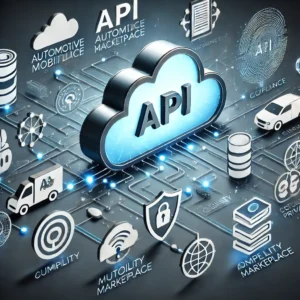
Der Kunde. CARIAD ist die Software- und Technologieeinheit des Volkswagen-Konzerns, die 2020 gegründet wurde, um die Digitalisierung und Vernetzung von Fahrzeugen voranzutreiben. Mit Fokus auf

Der Kunde. Die Volkswagen AG ist ein weltweit führender Automobilhersteller, der eine breite Palette von Fahrzeugen unter verschiedenen Marken wie Volkswagen, Audi und Porsche produziert.
Sie haben konkrete Fragen oder wollen unser Portfolio kennenlernen? Geben Sie uns Bescheid und wir rufen Sie zu Ihrem Wunschtermin zurück!
Sie können uns auch gerne direkt anrufen.